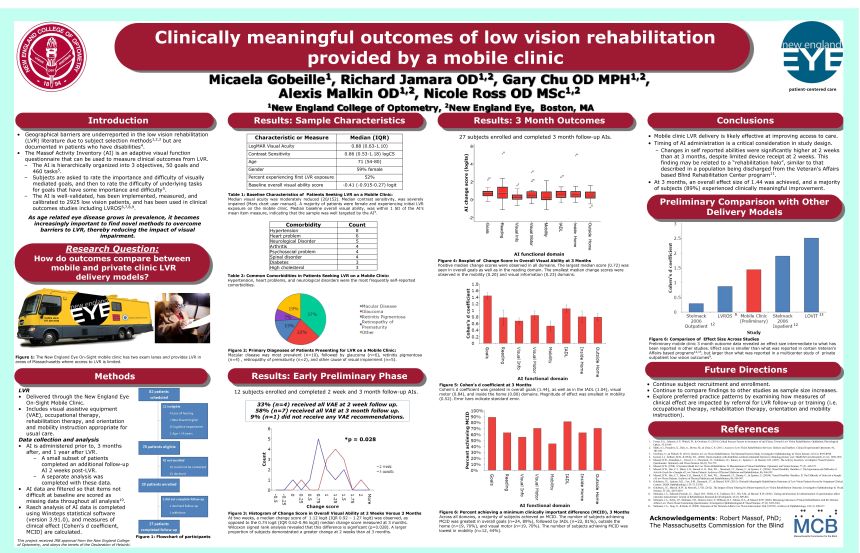
The Low Vision Lab
The Low Vision Lab specializes in low vision and its rehabilitation and collaborates with researchers from around the country to explore issues in this field. The research is mainly focused on ocular structure-function relationships, epidemiology of vision impairment, evidence-based clinical practice and translational research in vision testing and enhancement technologies.
People Research Highlights Presentations PublicationsResources
Contact Us at [email protected] or [email protected]
Location
NECO Center for Eye Care
930 Commonwealth Avenue
Boston, MA 02215
The lab has multiple ongoing projects, here are a few of our current studies.
This NIDILRR-funded project is a collaboration with Stein Eye Institute at UCLA.
The purpose of the study is to find out if there are benefits related to the use of smartphone applications for assistance with visual tasks. Study participants are randomly assigned to use one of three visual assistive mobile apps on a loaner iPhone for six months, followed by an optional period to use all three study apps for an additional three months. The study is recruiting participants through January of 2023.
In patients with low vision and central vision loss, when foveal function is lost patients adopt a preferred retinal locus. This preferred retinal locus (PRL) can develop rather quickly. However, research indicates characteristics of location, stability, and performance of the PRL may change depending on the task the patient is performing and the direction of gaze. This study explores properties of PRL location, visual function and eye movements in patients with low vision. This is a project the lab is conducting in concert with researchers at Northeastern University.
The study is another collaboration with UCLA and funded by the NIH/NEI and The American Academy of Optometry. It is an investigation in how patients interact with a newly-issued magnifier over a four-month period. A Bluetooth beacon sensor is attached to the magnifier to see how often the device is used and the length of usage. Participants are randomized to get trained on the device in-office or remotely by videoconferencing for an additional investigation in the efficiency of telerehabilitation compared to an in-person visit.
The Pelli-Robson is a gold standard test for contrast sensitivity but requires an in-person visit and that patients know the English alphabet. The SpotChecks™ test does not require this and may be feasible for remote completion. The test has not yet been widely evaluated in people with visual impairment. This study seeks to evaluate the agreement between contrast sensitivity measurements obtained by Pelli-Robson and SpotChecks™ charts across a range of levels of visual impairment and in normally-sighted controls.
This project is being conducted in collaboration with the Massachusetts Commission for the Blind, to explore individual factors associated with successful vocational and social vision rehabilitation services. We also are exploring factors associated with utilization of MCB services, and uptake rates of services by county and other demographics.

If you are interested in contributing to the research at the Low Vision Lab,...
Please contact Dr. Ross or Cecilia Idman-Rait, the low vision clinical research coordinator.
Email: [email protected] or [email protected]
Location
NECO Center for Eye Care
930 Commonwealth Avenue
Boston, MA 02215

Faculty
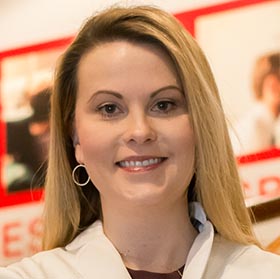
Nicole Ross, OD, MSc, FAAO, DAAO(LV) is an attending optometrist at NECO Center for Eye Care, Commonwealth, the Perkins School for the Blind and the Carroll Center for the Blind, teaches Low Vision Rehabilitation and Advanced Ocular Disease classes at NECO and is currently a PhD candidate at Northeastern University. Her research interests include ocular structure-function relationships, epidemiology of vision impairment, evidence-based clinical practice and translational research in vision testing and enhancement technologies.

Alexis G. Malkin, OD, FAAO practices at NECO Commonwealth, BU Eye Associates and Boston Medical Center. She is the Director of low vision residency and concentration programs, teaches in the Low Vision Rehabilitation course and contributes on various research projects at the lab. She is particularly interested in clinical research to better understand outcome measures and improved access to low vision care.

Jeffrey Ho, OD, FAAO practices at NECO Commonwealth, South Boston Community Health Center and North End Waterfront Health. He teaches in the Low Vision Rehabilitation and Ocular Disease Principles, Advanced Surgical & Laser Procedures and Virtual Interactive Case Studies courses. Dr. Ho’s research interests are focused on low vision and the effects of technology on quality of life outcomes.

Micaela Gobeille, OD, MS, FAAO is an attending optometrist at NECO Center for Eye Care, Commonwealth, the Carroll Center, BMC and Lynn and Holyoke Community Health Centers. She teaches Low Vision Rehabilitation and Ocular Disease Principles. Dr. Gobeille has published on low vision outcome measures and lectures nationally and internationally on topics pertaining to low vision care.

Jem Martin, OD practices at NECO Center for Eye Care, Commonwealth and Perkins School for the Blind. They are part of the teaching team for the Low Vision Rehabilitation class and they are interested in outcome measures and establishing evidence-based practices in caring for individuals with cerebral vision impairment.
Staff

Cecilia Idman-Rait, MPH joined the low vision lab in 2020 as a clinical research project coordinator. She is particularly interested in looking into the effects of loneliness in the visually-impaired population.
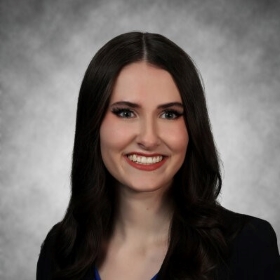
Allison Hyttinen, OD is the Low Vision Rehabilitation Resident for 2023/2024. She is particularly interested in how patients are affected emotionally by their visual impairment and how providers can best give patients the support they need to thrive.
Current Students

Bethany Arabic, OD/MS Candidate 2025, has contributed to the CARE project. She is interested in researching how older adults with low vision perceive visual assistive smartphone applications.
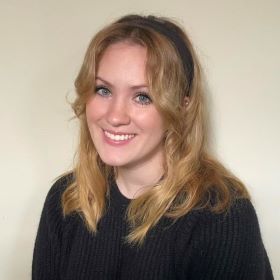
Meghan Knizak, OD Candidate 2024, has been part of the lab team since 2021 and has worked on both the PRL and the CARE studies. She is interested in how patients are affected mentally by their vision impairment and how the use of technology may aid the low vision and blind population.

Erika Pacheco, OD Candidate 2026, has contributed to the CARE project. Her interests include researching tools to aid the visually impaired population to improve their quality of life.
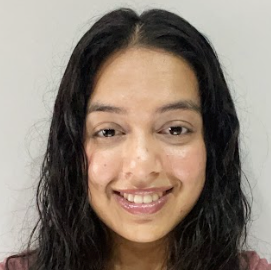
Priyanshi Patel, OD Candidate 2026, joined the lab in 2022 and has been working on the CARE study. She is interested in the impact of low vision impairment on patients’ quality of life. She is also keen to explore projects focusing on innovations in low vision technology.

Bridget Peterson, OD Candidate 2024, has contributed to the CARE study and will present at the upcoming AAO meeting in San Diego on “The Psychosocial Impact of Visual Assistive Apps in Seniors with Low Vision”. Bridget is interested in researching new tools to help individuals with visual impairments adapt to activities of daily living.

Maria Riaz, OD/MS Candidate 2024, has been working on a systematic review of Pediatric Perimetry. Her research interests include pediatric vision, diagnosis and management of vision impairment and visual field testing.

Olivia Wynn, OD Candidate 2026, has been contributing in the PRL study and upcoming CVI study. Her interests are in the vision development of patients with systemic and neurological disorders.
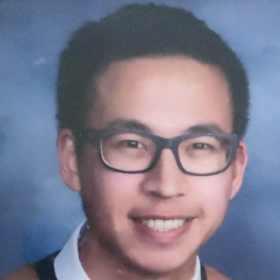
Chris Yeung, OD Candidate 2026, has joined the lab during his first year and has worked on the CARE study. He has a particular interest in technology and how it could be implemented to increase access to eye care as well as to improve the experience of low vision patients.
Low vision rehabilitation delivered by a mobile clinic
Researcher: Micaela Gobeille OD/MS
Research Question: How do patient outcomes compare between mobile and private clinic low vision rehabilitation delivery models?
Research Description: This study utilizes the activity inventory, a visual function questionnaire, to explore patient outcomes of low vision rehabilitation. We compare outcomes of a novel mobile clinic model vs. traditional in-office patient care delivery models.

Tele-rehabilitation for low vision
Researchers: Ava K. Bittner, OD, PhD, NOVA; John D. Shepherd, MD, UNMC; Nicole Ross, OD, MS; and Angie Bowers, MOT, OTR/L
Research Description: Pilot study developed to explore the potential of the internet as a means to deliver low vision services to patients using an established commercially available videoconference platform
Pilot Study Goals:
- Develop infrastructure for internet-based videoconference portal that allows low vision service provider to communicate with patients and assess their use of an optical magnification device and provide feedback training.
- Evaluate feasibility and acceptability of using the videoconference portal to communicate with 10 patients in their home/local venue with internet access.
- Determine the ability of the low vision service provider to assess a low vision patient’s use of an optical magnifier and reading fluency during the tele-rehabilitation encounter using various hardware devices.
Retrospective review of ocular findings in CHARGE Syndrome
Researchers: Rebecca Deffler, OD; Ali Hanley, OD; Barry Kran, OD, Professor, New England College of Optometry
Research Description: As clinical presentation can vary widely, there is need to review ocular findings and systemic comorbidities in patients with a diagnosis of CHARGE syndrome.
Exploring blur tolerance in low vision and normally sighted patients
Researchers: Kayla Andrade, T-35 Recipient, OD Candidate 2019; Ian Bailey, MS OD, University California, Berkeley
Research Questions: How does blur tolerance vary amongst individuals particularly in the low vision community? How does blur tolerance vary in the presence of varying ocular diagnosis, scotomas, and contrast sensitivity?
- Bittner AK, Kaminski JE, Ross NC, et al. Telerehabilitation Training to Facilitate Improved Reading Ability with New Magnification Devices for Low Vision. Optom Vis Sci. 2022;99(10):743-749. doi:10.1097/OPX.0000000000001944 https://journals.lww.com/optvissci/pages/articleviewer.aspx?ear=2022&issue=10000&article=00003&type=Fulltext
- Bittner AK, Yoshinaga PD, Shepherd JD, et al. Acceptability of Telerehabilitation for Magnification Devices for the Visually Impaired Using Various Approaches to Facilitate Accessibility. Transl Vis Sci Technol. 2022;11(8):4. doi:10.1167/tvst.11.8.4 https://tvst.arvojournals.org/article.aspx?articleid=2783534
- Deffler RA, Xu J, Bittner AK, et al. Use and Perceptions of Advanced Driver Assistance Systems by Older Drivers With and Without Age-Related Macular Degeneration. Transl Vis Sci Technol. 2022;11(3):22. doi:10.1167/tvst.11.3.22 https://tvst.arvojournals.org/article.aspx?articleid=2778680
- Malkin AG, Ross NC, Chun MW, Bittner AK; CARE Study Team. Why Are Visual Assistive Mobile Applications Underused by Low Vision Patients?. Optom Vis Sci. 2022;99(4):333-334. doi:10.1097/OPX.0000000000001893 https://journals.lww.com/optvissci/Fulltext/2022/04000/Why_Are_Visual_Assistive_Mobile_Applications.4.aspx
- Bowman B, Ross NC, Bex PJ, Arango T. Exploration of dynamic text presentations in bilateral central vision loss. Ophthalmic Physiol Opt. 2021;41(6):1183-1197. doi:10.1111/opo.12881 https://onlinelibrary.wiley.com/doi/abs/10.1111/opo.12881
- Costa K, Skerswetat J, Be PJ, Ross N; The effect of auditory feedback on perceptual and oculomotor performance in a gaze-contingent simulated scotoma paradigm. Journal of Vision 2021;21(9):2995. doi: https://jov.arvojournals.org/article.aspx?articleid=2777492
- Arango T, Ross N, Bex PJ; Fixation characteristics with Central Vision Loss at different gaze postures in a CSF task. Journal of Vision 2020;20(11):1574. doi: https://jov.arvojournals.org/article.aspx?articleid=2771279
- Malkin AG, Ross NC, Chan TL, Protosow K, Bittner AK. U.S. Optometrists’ Reported Practices and Perceived Barriers for Low Vision Care for Mild Visual Loss. Optom Vis Sci. 2020;97(1):45-51. doi:10.1097/OPX.0000000000001468 https://pubmed.ncbi.nlm.nih.gov/31895277/\
- Deemer AD, Swenor BK, Fujiwara K, et al. Preliminary Evaluation of Two Digital Image Processing Strategies for Head-Mounted Magnification for Low Vision Patients. Transl Vis Sci Technol. 2019;8(1):23. Published 2019 Feb 28. doi:10.1167/tvst.8.1.23 https://pubmed.ncbi.nlm.nih.gov/30834171/
- Hassan SE, Ross NC, Massof RW, Stelmack J. Changes in the Properties of the Preferred Retinal Locus with Eccentric Viewing Training. Optom Vis Sci. 2019;96(2):79-86. doi:10.1097/OPX.0000000000001324 https://journals.lww.com/optvissci/Fulltext/2019/02000/Changes_in_the_Properties_of_the_Preferred_Retinal.2.aspx
- Deemer AD, Bradley CK, Ross NC, et al. Low Vision Enhancement with Head-mounted Video Display Systems: Are We There Yet?. Optom Vis Sci. 2018;95(9):694-703. doi:10.1097/OPX.0000000000001278 https://pubmed.ncbi.nlm.nih.gov/30153240/
- Gobeille MR, Malkin AG, Jamara R, Ross NC. Utilization and Abandonment of Low Vision Devices Prescribed on a Mobile Clinic. Optom Vis Sci. 2018;95(9):859-864. doi:10.1097/OPX.0000000000001267. https://pubmed.ncbi.nlm.nih.gov/30169360/
- Bittner AK, Yoshinaga P, Bowers A, Shepherd JD, Succar T, Ross NC. Feasibility of Telerehabilitation for Low Vision: Satisfaction Ratings by Providers and Patients. Optom Vis Sci. 2018;95(9):865-872. doi:10.1097/OPX.0000000000001260 https://pubmed.ncbi.nlm.nih.gov/30169361/
- Gobeille M, Malkin A, Jamara R, Ross NC. Clinical outcomes of low vision rehabilitation delivered by a mobile clinic. Ophthalmic Physiol Opt. 2018;38(2):193-202. doi:10.1111/opo.12440 https://pubmed.ncbi.nlm.nih.gov/29485207/
- Goldstein J, Ross N, Gold D, Kheradmand A. Visual, Ocular Motor, and Vestibular Deficits. In Stroke Recovery and Rehabilitation, Second Edition, Eds. Stein J, et al. Demos Medical 2014. DOI:10.1891/9781617051708.0018 https://connect.springerpub.com/content/book/978-1-6170-5170-8/part/part03/chapter/ch18
- Apfelbaum HL, Ross NC, Bowers AR, Peli E. Considering Apical Scotomas, Confusion, and Diplopia When Prescribing Prisms for Homonymous Hemianopia. Transl Vis Sci Technol. 2013;2(4):2. doi:10.1167/tvst.2.4.2 https://tvst.arvojournals.org/article.aspx?articleid=2120955
- Ross NC, Bowers AR, Peli E. Peripheral prism glasses: effects of dominance, suppression, and background. Optom Vis Sci. 2012;89(9):1343-1352. doi:10.1097/OPX.0b013e3182678d99 https://journals.lww.com/optvissci/Abstract/2012/09000/Peripheral_Prism_Glasses__Effects_of_Dominance,.17.aspx
- Bowman B, Ross NC, Bex PJ, Arango T. Exploration of dynamic text presentations in bilateral central vision loss. Ophthalmic Physiol Opt. 2021;41(6):1183-1197. doi:10.1111/opo.12881 https://onlinelibrary.wiley.com/doi/abs/10.1111/opo.12881





